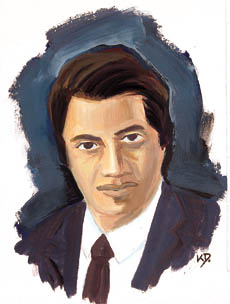ONE of the greatest mathematicians from India, S. Ramanujan would have rotted as clerk serving the Madras Port Trust had he not mailed his papers to Prof Godfrey Harold Hardy, the renowned mathematician of the Trinity College, Cambridge. Looking at the strange equations, Hardy at first took them to be a work of a crank, but the genius in him forbade him to consign the letter to the  waste bin. He read the paper again and again, and later discussed the matter with Prof J. E. Littlewood. They worked late into the night and soon realised that the manuscript was the work of a genius. Soon Ramanujan was on his way to Cambridge where he grew in stature, and was made a fellow of the Royal Society in 1918, and in the same year was elected fellow of the Trinity College, Cambridge where he made valuable contributions to the theory of numbers, the theory of partitions, and the theory of continued fractions.
waste bin. He read the paper again and again, and later discussed the matter with Prof J. E. Littlewood. They worked late into the night and soon realised that the manuscript was the work of a genius. Soon Ramanujan was on his way to Cambridge where he grew in stature, and was made a fellow of the Royal Society in 1918, and in the same year was elected fellow of the Trinity College, Cambridge where he made valuable contributions to the theory of numbers, the theory of partitions, and the theory of continued fractions.
Ramanujan was so immersed in mathematics that he could relate it to his everyday experience. Once, when Ramanujan was indisposed, Professor Hardy came to enquire about his health. After greeting the promising mathematician, Professor Hardy said, 'The number of the taxicab in which I came here was 1729. It seems to be a dull one, and I hope it is not an unfavour-able omen.'
'No, it is a very interesting number,' Ramanujan quipped, 'In fact, it is the smallest number expressible as a sum of two cubes in two different ways.'
That was Ramanujan, who, as Professor E. T. Bell put it, had 'arrived unexpectedly out of nowhere' and astounded experienced mathematicians with his unique methods. But before he could make further strides in the world of numbers, he died at a young age of 33. Nearly eighty years after his death, scholars are still trying to evaluate the true merit of Ramanujan's legacy. Until 1957, three of his invaluable notebooks were gathering dust in the cabinets of the Madras University. Fortunately, the Tata Institute of Fundamental Research discovered them and published them, and mathematicians have been busy trying to solve the intricate equations of the greatest mathematician India has seen since Bhaskaracharya of the twelfth century.
http://www.tribuneindia.com/2000/20000102/spectrum/main2.htm
No comments:
Post a Comment